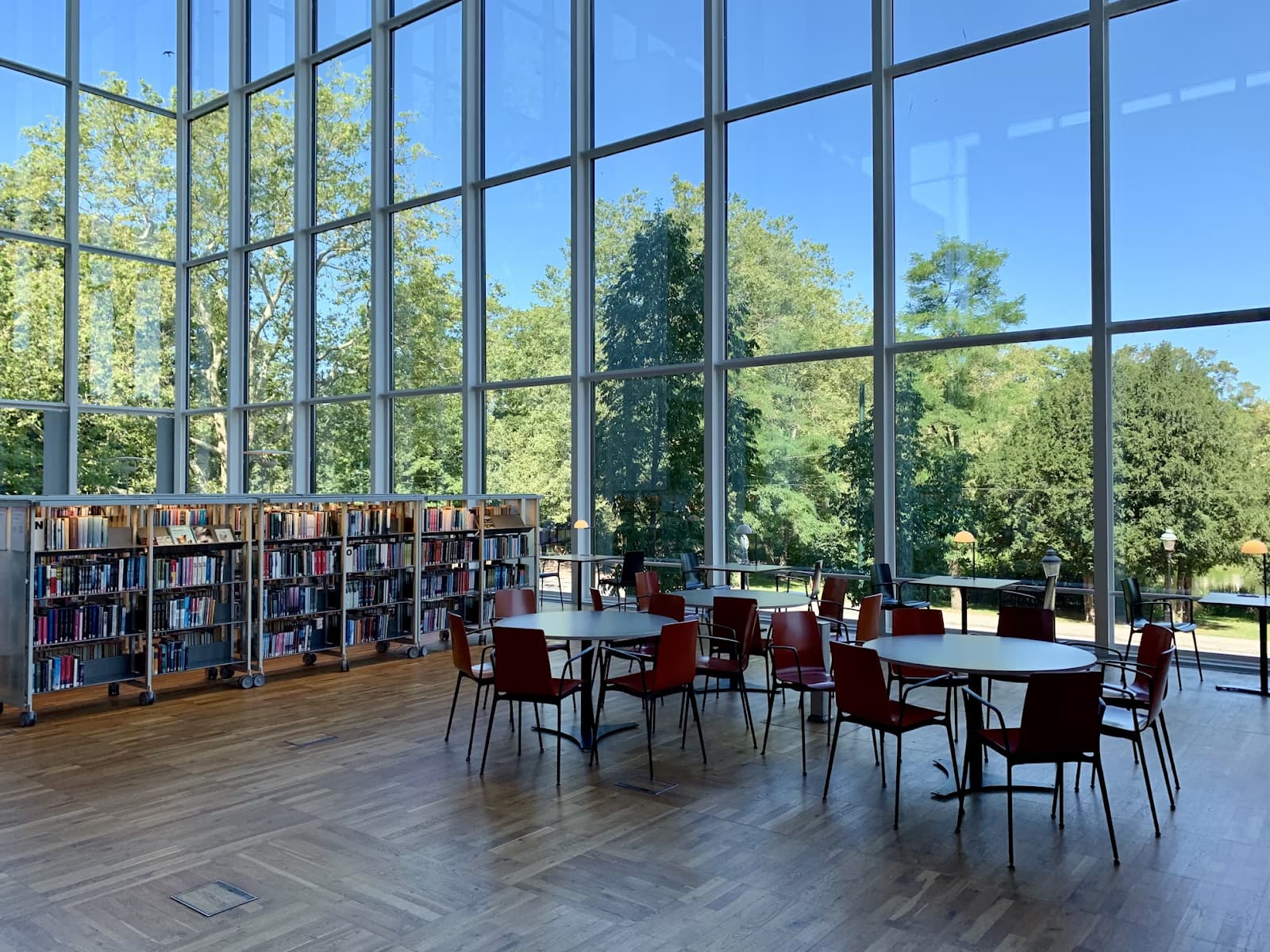Imagine this: you’re a freshman at a bustling university, brimming with ideas and a thirst for knowledge. You wander the halls, eager to connect with professors and fellow students alike, but the traditional office setups leave you feeling hesitant.
Closed doors and opaque walls create a physical and psychological barrier. This is where the concept of open offices with strategically placed glass doors comes into play, transforming universities into hubs of collaboration and innovation.
Gone are the days of feeling excluded by a closed door. Universities are embracing transparency with open office spaces that utilize glass partitions. These transparent walls not only bathe the workspace in natural light but also foster a sense of accessibility and connection.
Professors working on research projects become visible, inviting students to approach them with questions or propose collaborations. Likewise, students engaged in group work can benefit from the visual exchange of ideas, sparking creativity and cross-pollination of knowledge.
But how exactly do open offices with glass doors achieve this transformative effect? Let’s delve deeper into the benefits:
- Enhanced Collaboration
Open office spaces with clear lines of sight encourage interaction. Students can easily see if a professor or classmate is available, removing the awkwardness of knocking on a closed door.
This fosters impromptu discussions, brainstorming sessions, and informal mentoring opportunities – all crucial ingredients for academic growth.
- Breaking Down Silos
Traditional university departments often operate in isolation. Glass doors break down these barriers, allowing professors and researchers from different disciplines to observe each other’s work.
This can spark unexpected connections and lead to interdisciplinary projects that push the boundaries of knowledge creation.
- Promoting a Culture of Innovation
When research and creative processes are visible, they become more inspiring. Students see professors actively engaged in groundbreaking work, fostering a culture of innovation and encouraging them to pursue their own ideas.
The transparency also allows for peer-to-peer learning, where students can observe and learn from each other’s problem-solving approaches.
- A Sense of Community
Open office layouts with glass walls create a more welcoming and inclusive environment. Students feel a sense of belonging and are likelier to engage with their professors and peers. This fosters a collaborative spirit and a stronger sense of community within the university.
- Increased Accountability
Transparency goes both ways. Open offices with glass doors allow professors to observe student work ethic and engagement. This can be a positive motivator for students and ensure a more productive learning environment.
Of course, implementing open offices requires careful planning. Here are some important considerations:
- Variety is Key
Don’t make every space completely open. Include designated quiet study areas, conference rooms with opaque walls, and individual offices with glass doors for focused work or one-on-one meetings. This provides a balance between transparency and privacy.
- Furniture Matters
Choose furniture that promotes collaboration, such as round tables and modular seating arrangements. Movable whiteboards and pinboards near glass walls can further encourage brainstorming and information sharing.
- Technology Integration
Consider incorporating technology into the open office design. Interactive displays on glass walls can be used for presentations, brainstorming sessions, or showcasing student work.
- Engaging the University Community
Get feedback from students, faculty, and staff throughout the design process. This ensures the open office space caters to the specific needs and preferences of the university community.
- Training and Support
Transitioning to an open office environment can be an adjustment. Offer training sessions on effective communication, open-space etiquette, and strategies for maximizing productivity in a collaborative setting.
Dominius.no: Your Partner in Creating Open and Collaborative University Spaces
Universities seeking to embrace transparency and foster a culture of innovation can find a valuable partner in Dominius.no, a leading provider of high-quality glass doors in Norway.
Dominius offers a wide range of glass door options designed to meet the specific needs of universities. Their products are known for their durability, aesthetics, and functionality.
The company understands the importance of creating spaces that promote collaboration and communication. They work closely with architects and universities to design open office layouts that optimize natural light, manage sound effectively, and create a welcoming environment for students, faculty, and staff.
Whether you require sleek, minimalist glass walls or partitions with integrated blinds for privacy, Dominius.no has the expertise and solutions to transform your university into a vibrant hub of open exchange and knowledge creation.
By embracing open offices with strategically placed glass doors, universities can foster a more transparent, collaborative, and innovative learning environment. This, in turn, empowers students and faculty to reach their full potential, pushing the boundaries of knowledge and shaping a brighter future.

